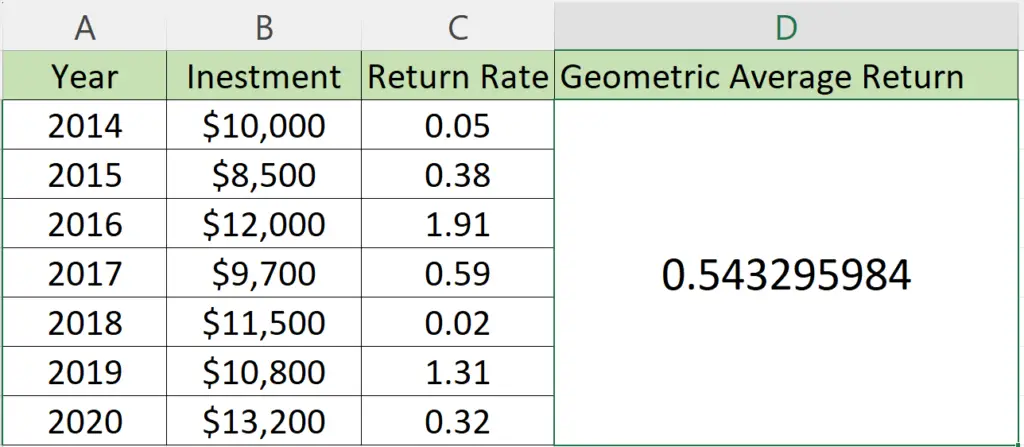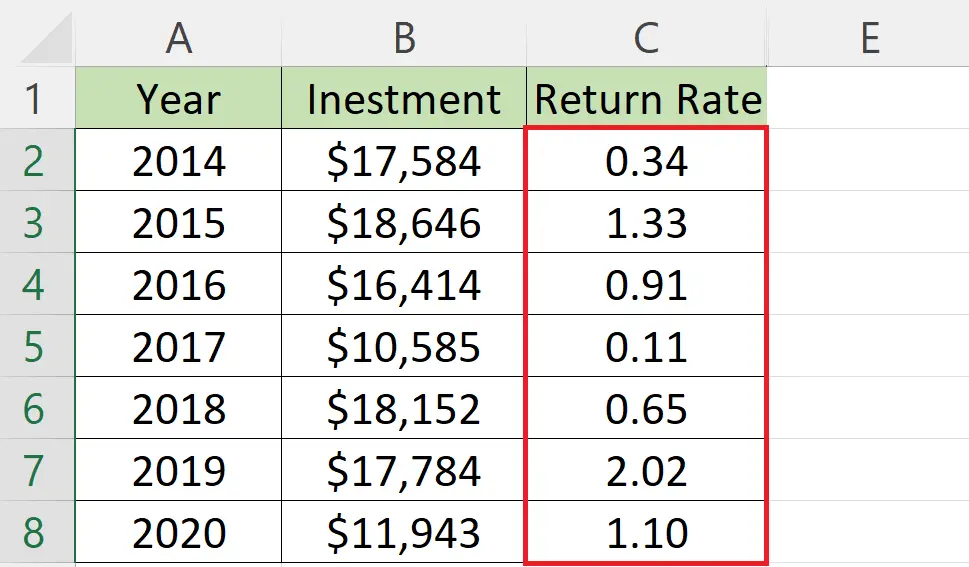How to calculate geometric average return in Microsoft Excel
In Microsoft Excel, the geometric average return is a statistical measure used to calculate the average rate of return over a series of values that have compounding effects. It is commonly used in finance and investment analysis to assess the performance of an investment portfolio over a specific period.
In this tutorial, we will learn how to calculate geometric average returns in Microsoft Excel. In Excel calculating geometric average return is a crucial task that is extensively utilized. For this purpose, we can utilize the GEOMEAN function and also the generic formula of geometric average return.
Method 1: Calculating the Geometric Average Return from the Generic Formulae
The generic formula for Geometric Average Return is:
((1+R1)*(1+R2)*(1+R3)…)^(1/n)
- “n” is the number of periods.
- “R1, R2, R3” are the return rates.
Step 1 – Utilize the Formulae

- Choose a blank cell to calculate the geometric average return.
- Enter the formula and input the parameters.
Step 2 – Press the Enter Key to Return the Value

- Press the Enter key to calculate the geometric average return.
Method 2: Utilizing the GEOMEAN Function
The GEOMEAN function in Excel is a pre-built function that returns the geometric mean. We can utilize the GEOMEAN function to calculate the geometric average return.
Step 1 – Organize the Return Rates for Each Period

- Organize the return rates for each period in a column.
Step 2 – Utilize the GEOMEAN Function

- Enter the GEOMEAN function in a cell.
- Input the range of cells containing the return rates for each period.
- Hit the Enter key.



